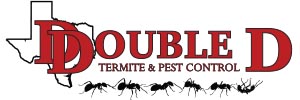In addition to nesting under sidewalks, pavement ants colonies can be found under other items lying on top of the ground, including stones, logs, boards, bricks and patio blocks. They may nest in open soil close to building foundations or under mulch in landscaped beds. Only rarely do the ants nest indoors in walls, under floors or in insulation.
Control of pavement ants should begin with an attempt to locate the nest site. Ants entering buildings from outdoors can be discouraged by sealing as many cracks and gaps in exterior walls as possible. Also, correct poor foundation drainage and repair water leaks.
Odorous House Ants
Odorous house ants are small ants about 1/8th inch long and dark brown in color. They are found throughout the US and in spite of their name, are only an occasional pest in the house. Their name comes from the disagreeable odor similar to the smell of rotten coconuts that is given off when the worker ants are crushed.
Odorous house ants commonly nest outdoors in the soil under stones, logs, mulch, debris and other items. They will also nest indoors in wall and floor voids, particularly in moist or warm areas. If only a few workers (wingless ants) are observed in the house it is an indication that they are nesting outdoors and entering the house in search of food. If winged swarmers are found indoors, or if workers are consistently seen in great abundance, it likely indicates they are nesting within the house.
Control of odorous house ants should begin with an attempt to locate the origin of the ants. Careful and frequent observation may be necessary to develop an opinion about the source. Ants entering from outdoors can be discouraged by sealing as many cracks and gaps in exterior walls as possible.
Pharaoh Ants
Pharaoh ants are very small in size, and light yellow to red in color with black markings on abdomen. Due to their extremely small size, they can be found in a diversity of places, appearing suddenly. They have a wide range of foraging and their nest are usually well hidden. They are very persistent, with large colonies.
Inside they are usually found in the kitchen and bathrooms, but workers are seen trailing along window sills, and baseboards. They can also be spotted near sources of water in the kitchen and bathrooms, counter tops, toilets, drains and sinks. They prefer to nest in recessed areas like wall voids,under some appliance, wall outlets, under carpet for protection, but they can also nest outdoors in lawns and gardens.
Imported Fire Ants
Imported Fire ant workers vary in size, ranging from 1/16 to ¼ -inch long and are yellow to dark red-brown. The thorax lacks spines, and the petiole has two nodes. They have a stinger at the tip of the abdomen and ten-segmented antennae, which is tipped with a two-segmented club.
The red imported fire ant single-queen colonies range in size from 80,000-250,000 workers and 30-100 mounds per acre. Multi-queen colonies have fewer workers per colony but 200-700 mounds per acre. Queens can produce approximately 1,500 eggs per day. The larvae mature into workers in 22-38 days. Minor workers live 30-60 days, intermediate workers 60-90 days, and major workers 90-180 days. Queens live from two to six years. Males die shortly after swarming. Six to eight swarms occur each year and typically contain 4,500 swarmers. Other species have different biological characteristics.
Several species of Solenopsis are called, fire ants, because of the fiery pain their stings inflict upon the victim. These ants usually nest in the ground but can develop colonies in structures, especially in areas near the soil. They are attracted to electrical junction boxes, such as air conditioners and traffic signals. When nesting in the soil, they build large, unsightly mounds which are a detriment to cultivation of fields. Some species of fire ants nest in typical ant habitats, such as under stones, landscape timbers, in voids and around foundations.
These ants, and especially the red imported fire ant, Solenopsis invicta have tremendously large colonies that can injure crops, lawns, young birds, and people. Fire ants prefer high protein foods but will feed on practically everything, including other insects, honeydew, seeds, fruit juices, nectar, plants, nuts, cereals, butter, grease, and meats. They also gnaw on electrical wiring and clothing, especially if it is soiled.
Have a pest problem that we haven’t covered here? Just give a call at 1-817-558-PEST (7378) and talk to a Double D representative, or
- You can send us a e-mail.
